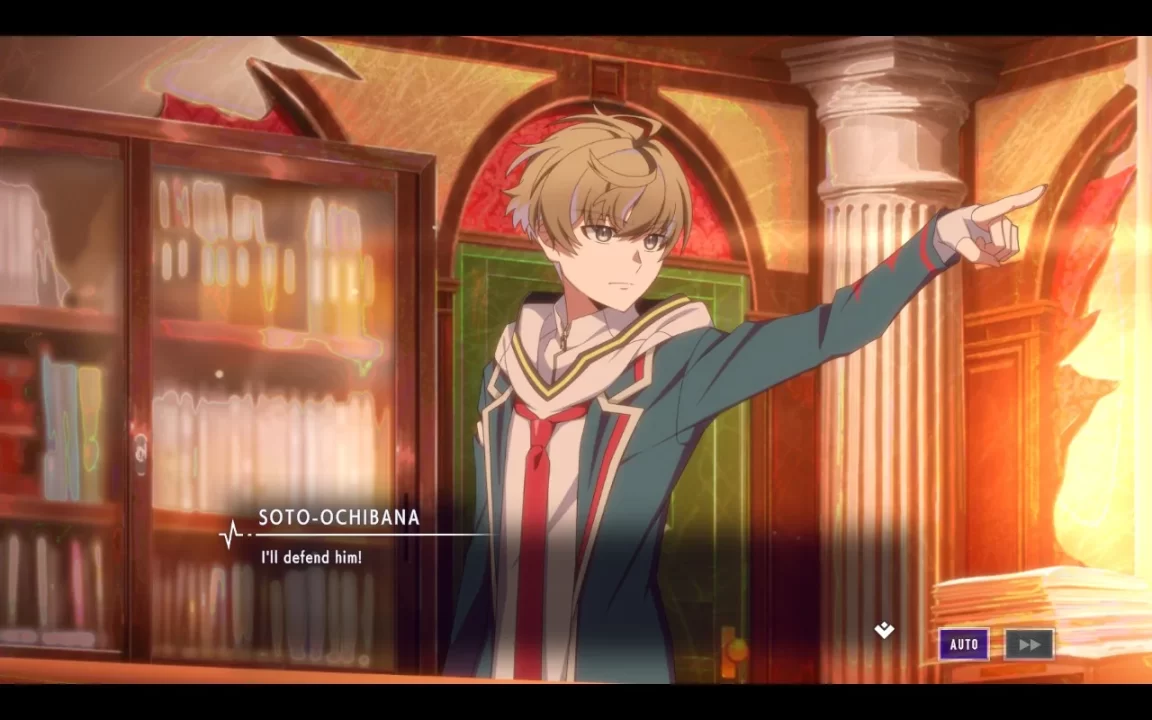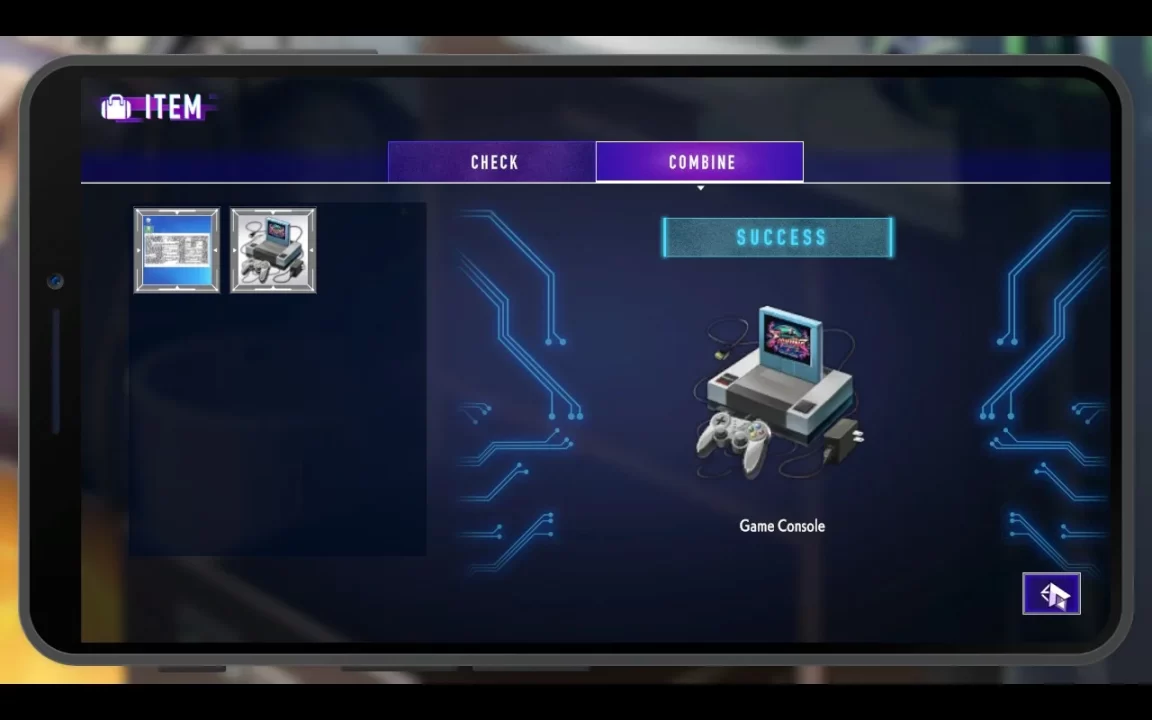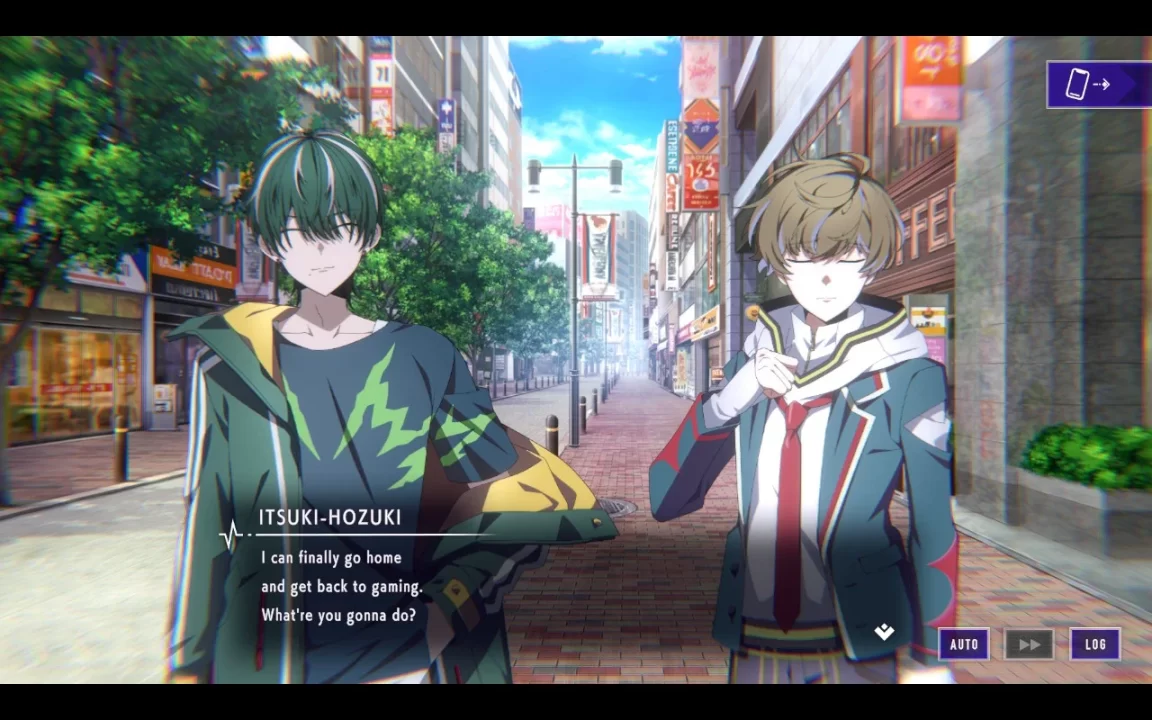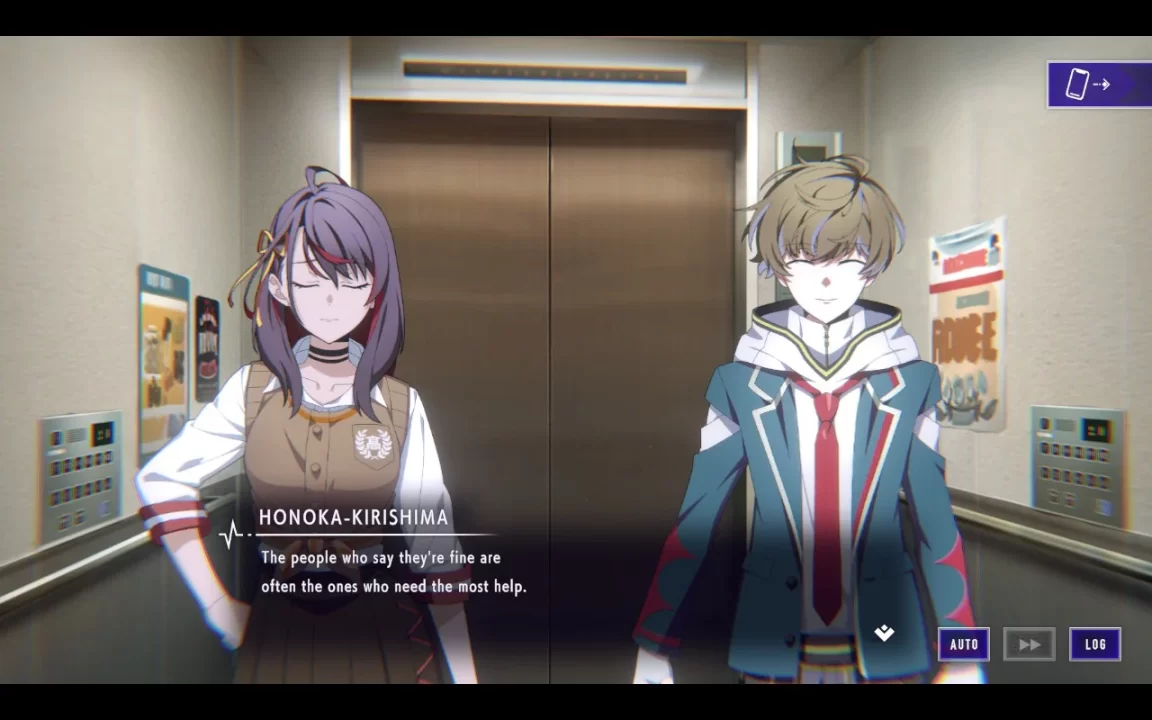When a game opens with the statement, “Do not attempt to reenact extreme and/or depressing events or performances depicted,” you know you’re in for a conflicting experience. In good faith, this warning is entirely justified, but the choice of the word “depressing” as opposed to a word like “violent” or “horrific” lessens the intensity and confuses the message, even if depression is a factor at play. Type-NOISE: Shonen Shojo is a horror-mystery point-and-click adventure game that does feature violence, horror, and other disturbing imagery and storylines worthy of content warnings. But for its successes at treating trauma with warranted seriousness, a questionable localization dulls the impact of much of the otherwise sharp game.
The story of Type-NOISE follows six teens, each with their traumatic memories erased, trapped in a fake Shibuya called Noise Scramble City. To escape, they must each recall their pasts by unraveling puzzles based on their forgotten experiences. These puzzles operate fairly typically for horror-mystery point-and-click adventure games. You explore the environment to obtain clues and items, and you can use or combine certain items to interact with background props. To unlock the final door and escape each level, you need to solve all the riddles present.
The game’s puzzles are generally interesting and encompass a wide variety of tasks. Some standouts include a Street Fighter-inspired pattern memorization mini-game, a card-flipping game that requires paying attention to not just the cards but your surroundings, and a chess-like game where you control fighter jets against kaiju. There’s even an homage to Ace Attorney, complete with “blip” sound effects for the characters’ text boxes, moderato and allegro testimony music, and special behind-the-counsel table character sprites. The game’s penultimate puzzle incorporates especially unique effects, such as a computer recycle sign used to pick up trash, and reflecting a photo in a mirror to complete it.
If anything, more puzzles like these could have helped push Type-NOISE’s unique aspects. Instead, how the game primarily differentiates itself from others in its genre is its “Noise” mechanic. As you explore, you’ll find puzzle pieces called Noise Fragments. When you get all the Fragments of a particular Noise, you can put the pieces together and unlock a character’s repressed memory. These memories serve as backstory, revealing each character’s trauma—the thing they want to forget most of all, which brought them to the fake Shibuya to begin with.
The memories also include details that direct the investigation. After watching a memory, new related items may become available to interact with, such as a submerged cage after viewing a memory about fishing. This is a clever way to pace investigations, deliver storytelling, and justify interacting with certain objects at certain times.
Before or after unlocking a memory, it isn’t always obvious which objects you can interact with, but this isn’t a bad thing. Type-NOISE has a distinct visual flair, with crowded environments and dizzying colors that evoke great unease. There are plenty of surreal details, like blackboards with melting, dripping edges, messy rooms with faces in the wallpaper, curtains suspended mid-flutter, and doors that curve uncontrollably. The settings are also littered with thematic items, further adding to the overwhelm and chaos in each location.
The items you can interact with aren’t indicated with any sort of icon, unlike most point-and-click adventure games. This keeps the screen clean of most UI elements and allows the environments the freedom to truly shine and impose their chaos on you. Instead of an icon to display if you’ve already checked something, the game’s “Scan” feature keeps track of what you have and haven’t found yet. The Scan causes items with more information to glow. The only downside is that objects that lead to another scene, such as a safe that you can check inside, will always glow when using Scan, even if there’s nothing left in the subsequent scene to interact with.
The same way the Scan function reveals the environment’s objects, playing Type-NOISE for even a single chapter reveals its obvious inspirations. Certain major plot points and twists may feel familiar to anyone who has experienced the Zero Escape and Danganronpa series. This isn’t necessarily an issue, since Type-NOISE has its own unique spin by focusing on the importance of remembering and confronting your past to grow as a person, and sometimes there’s comfort in recognizing such similarities. But when the game’s inspirations are known for mind-bending twists, it doesn’t do Type-NOISE any favors that it doesn’t have any of its own to make it stand out.
Its characters fare much better, however. Each main character has a sharp design with many popping colors that grant both distinctiveness and cohesiveness with the bright backgrounds. It’s also impressive how distinct everyone’s personality is. It’s usually clear whose dialogue is whose thanks to stark differences in dispositions, which feels especially successful since the game does not feature any voice acting. Even the “quiet” and “aloof” characters, Shimizu and Honoka, respectively, feel distinct even when reaching their lowest emotional points, which is impressive considering “quiet” and “aloof” can easily be treated as interchangeable under different circumstances.
Appropriate to Type-NOISE’s emphasis on memory, the cast’s personalities are formed in large part due to their past, including their traumas. Each character’s trauma is different, but none is dismissed as being “lesser” or “not really trauma,” even though certain characters endured especially heinous experiences. It’s a nice change of pace to have fleshed-out characters when games of this nature tend to relegate most of their cast members to tropes and game pieces to be manipulated by the story, ultimately eclipsed by one or two protagonists. This is a genuinely interesting group to get to know and solve the mysteries of their pasts.
But this only makes it hurt all the more when Type-NOISE’s localization shatters that characterization with awkward, unfitting phrasing. One of the game’s most abhorrent characters describes the time he arrived in his victim’s life as “when [he] sashayed onto the scene.” Not only is “sashayed” a word that is very challenging to take seriously, but the character who says it doesn’t use similar language at any other point. It stands out like a sore thumb in a moment that’s meant to be incredibly serious with high stakes.
Another example of this kind of off-putting phrasing comes from the aforementioned chess game against kaiju. Except it isn’t actually against kaiju, but “primordial beasts,” or sometimes “primitive monsters.” It’s distracting to read such clunky descriptions, especially when kaiju has practically become a loan word that most English speakers understand.
Although Type-NOISE received an update to improve this unimpressive localization, these awkward phrases and typos still abound. “That” may be written as “taht” or “thta,” a character might be “series” instead of “serious,” and mannequins, the focal point of an early environment, are “hunging” instead of “hung” or “hanging”—although the neighboring chair is “hanging” around just fine.

Characters can also have inconsistent names, like Zena being called “Xena” or Itsuki being called “Itzuki.” Another oddity is how background character names are displayed. Throughout Type-NOISE, you’ll encounter characters such as “Guitarist_of_Another_Band” and even “AKARI’s_friend_A” and “AKARI’s_friend_B.” While it’s understandable for their names to include some type of stylization since the main characters’ names are stylized as “FIRSTNAME-LASTNAME” in their text boxes, it still looks like placeholder text rather than an intentional decorative choice.
In a game full of clearly intentional choices, a sloppy localization is too egregious to overlook. In the same way you collect clues to piece together the mysteries of a point-and-click adventure game, typos and odd writing choices add up. Type-NOISE knows to remove items from your inventory once they can’t be used any more because keeping them around would only serve as clutter, yet the consistency of the poor localization is the equivalent of an inventory filled with items you’ll never use. As interesting as the characters may be, a villain “sashay[ing] onto the scene” is going to be much more memorable, and for the wrong reasons.
At the end of each character’s storyline is an “Inevitable Dialogue” between the character and someone involved in their traumatic past. As you select the right answers to the questions asked, the characters talk through their experiences and steel their newfound resolve to move forward. The importance placed here on communication only serves to drive the point home: it’s not just what you say but how you say it that determines if the message lands or not. Unfortunately, not all of Type-NOISE: Shonen Shojo‘s interesting ideas always land.





